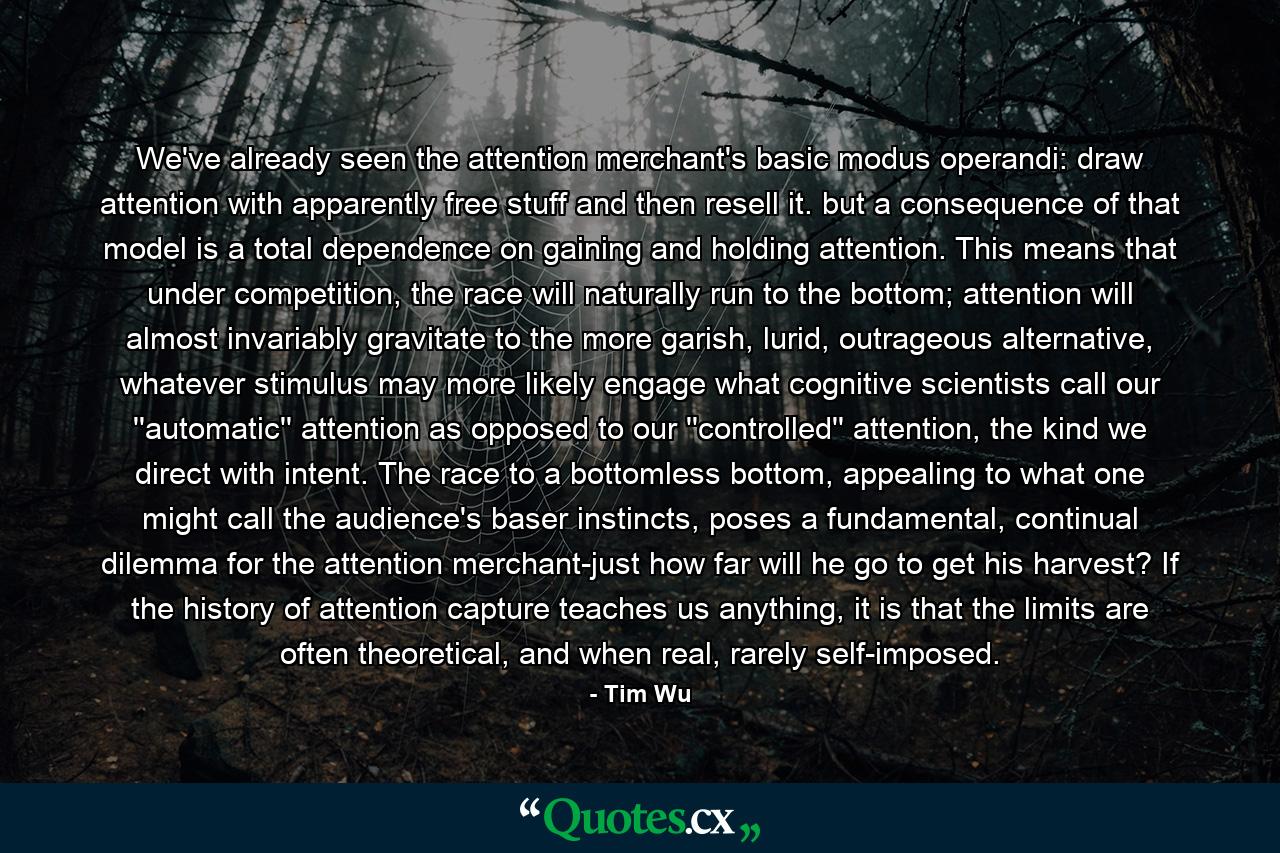We’ve already seen the attention merchant’s basic modus operandi: draw attention with apparently free stuff and then resell it. but a consequence of that model is a total dependence on gaining and holding attention. This means that under competition, the race will naturally run to the bottom; attention will almost invariably gravitate to the more garish, lurid, outrageous alternative, whatever stimulus may more likely engage what cognitive scientists call our ”automatic” attention as opposed to our ”controlled” attention, the kind we direct with intent. The race to a bottomless bottom, appealing to what one might call the audience’s baser instincts, poses a fundamental, continual dilemma for the attention merchant-just how far will he go to get his harvest? If the history of attention capture teaches us anything, it is that the limits are often theoretical, and when real, rarely self-imposed.
